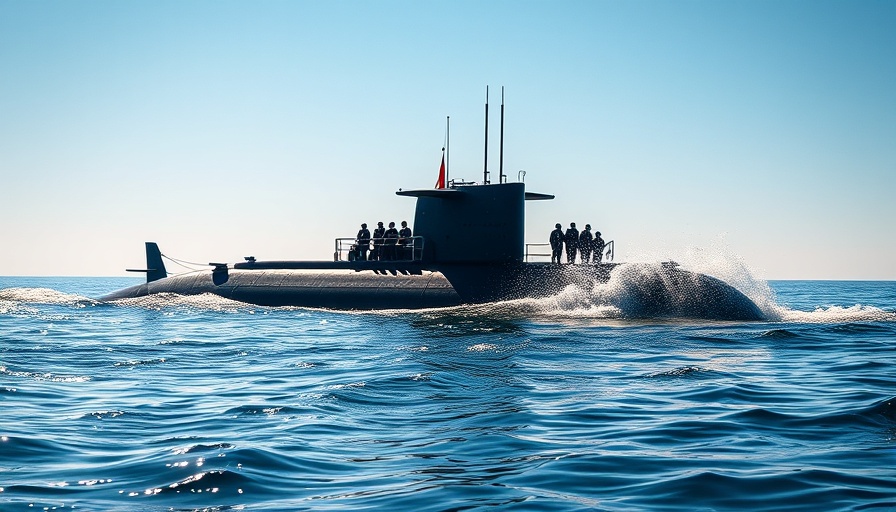
Poland's Urgent Need for Modern Submarines
The Polish Navy found itself at a critical juncture, relying on the outdated Kilo-class ORP Orzel for its maritime defense. With the geopolitical climate in Europe steadily evolving, the need for modern submarines has become imperative. As Poland's Ministry of National Defence accelerates its procurement process, key players such as Babcock, Fincantieri, and Saab have stepped forward, signaling their commitment to enhancing Poland's naval capabilities under the ambitious Orka program.
Coalition of Defense Partners Targeting Poland
At this year’s MSPO defense industry show in Kielce, Poland, the collaborative agreements signed between PGZ (Polska Grupa Zbrojeniowa), Babcock, Fincantieri, and Saab indicate a robust shift towards strengthening defense ties. These partnerships are not just about landing a lucrative contract; they represent strategic alliances that could redefine Poland’s defense employment landscape. As Pierroberto Folgiero, the CEO of Fincantieri, emphasized, Poland's naval modernization plans are essential, and his company’s extensive experience in submarine construction positions them as a top contender for the Orka program.
Collaboration in Action: The Example of Miecznik
These companies are not new players in the Polish defense sector. Babcock's involvement in the Miecznik program, aimed at developing new frigates, showcases an already established relationship with PGZ. This project has illustrated how international expertise can fuse with local knowledge to create cutting-edge maritime assets, paving the way for the Orka submarine initiative. David Lockwood, CEO of Babcock, noted that ongoing projects like Miecznik enhance their commitment and collaboration with the Polish Armed Forces, a crucial element for future endeavors.
Political Pressures and Defense Policies
However, while industrial commitments are being made, domestic political pressure is mounting. The Polish government recognizes that advancing the Orka program is not merely an operational decision but a political imperative. Discussions led by President Karol Nawrocki highlight a public demand for modernization of the Polish Navy that has been simmering for decades. The sentiment resonates with sailors calling for locally-built submarines that would serve both defense needs and national pride.
Competitive Landscape: Global Players Enter the Arena
The race for the Orka program is fierce, with eleven entities vying for attention. With various countries turning their gaze toward Poland, international competition could drive innovation and technology transfer that is beneficial to Poland’s defense industry. In this context, the partnerships formed by Babcock, Fincantieri, and Saab could potentially dominate the narrative, setting standards and expectations for quality and capability.
Future Outlook: What’s Next for Poland’s Defense Industry?
The strategic collaboration tied to the Orka program may yield long-term benefits that extend beyond these contracts. As Poland continues to modernize its defense capabilities, these partnerships could lead to an increase in domestic production of advanced naval platforms, cementing Poland’s position as a player on Europe’s defense landscape. Furthermore, they may also prompt other nations to reconsider their own defense partnerships and procurement strategies, sparking wider industry innovations.
Closing Thoughts: Importance of Staying Informed
For those interested in the evolving landscape of international defense collaborations and technological advancements, keeping track of Poland’s submarine acquisition is key. It reflects broader trends in defense spending, technological cooperation, and military strategy in Europe. As nations reassess their security needs, Poland’s decisions will likely influence regional military dynamics.
 Add Row
Add Row  Add
Add 




Write A Comment